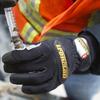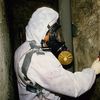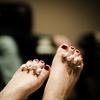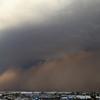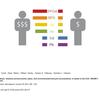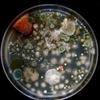Monona Rossol appears in the following:
An Industrial Hygienist's Perspective on the Trump Administration
Monday, January 08, 2018
Avoiding Holiday Hazards, Making Safe Workspaces for Artists
Monday, December 19, 2016
How to Protect Yourself in the Toxic Spaces Left Behind by Industry
Tuesday, June 14, 2016
Behind the Smoke Screen: The Toxic Chemicals in E-Cigarettes
Monday, February 15, 2016
The Hidden Dangers For Workers on Film and TV Sets
Thursday, October 29, 2015
Think Before You Ink
Wednesday, July 29, 2015
Monona Rossol Answers Reader Questions on the Dangers of Beauty Products
Friday, May 29, 2015
Can Cosmetics Pose a Health Hazard?
Wednesday, May 27, 2015
Organic Trees, Offensive Scents, and the "George Burns Theory of Toxicology."
Wednesday, December 10, 2014
The Hazards of Christmas Decorations
Tuesday, December 09, 2014
The Dangers of Dust
Tuesday, August 12, 2014
Dust is almost everywhere, and while most household dust isn't hazardous, dust in factories and in the environment can contain toxins and particles that are dangerous to inhale and are even flammable.
Monona Rossol Responds to Your Questions and Comments
Monday, December 09, 2013
Monona Rossol responds to comments and questions.
Toxins in Our Bodies
Wednesday, November 27, 2013
Industrial hygienist and chemist Monona Rossol discusses a study showing that rich people and poor people have different toxic substances in their bodies. She's the author of Pick Your Poison: How Our Mad Dash to Chemical Utopia Is Making Lab Rats of Us All.
Monona Rossol Talks Mold
Wednesday, June 19, 2013
Last fall, flooding from Superstorm Sandy resulted in mold damage in many homes, and industrial hygienist Monona Rossol helped us figure out how to prevent and treat it. Now that we're coming into humid summer weather, we'll take a look at how successful remediation efforts have been, and how we can prevent recurrences.
Chemical Testing and Regulation
Monday, April 22, 2013
Ian Urbina, New York Times investigative reporter, and Monona Rossol, chemist, industrial safety expert and author of Pick Your Poison, talk about the lack of testing of chemicals found in shampoos, cosmetics, cleaners, and other household goods. They’ll explain how the FDA regulates these chemicals, concerns about their safety, and how states are creating their own programs to police chemical safety.
Theater Safety
Wednesday, January 02, 2013
Chemist and industrial hygienist Monona Rossol talks about theater safety. She's the author of Pick Your Poison: How Our Mad Dash to Chemical Utopia is Making Lab Rats of Us All.
Please Explain: Mold
Friday, November 30, 2012
Mold is a common household nuisance—it can appear on shower curtains and in damp basements and on aging foods in the refrigerator, but it’s a major concern in the aftermath of flooding caused by Sandy. Industrial hygienist and environmental health expert Monona Rossol and microbiologist Chin Yang, of Prestige EnviroMicrobiology, explain what mold is, where it comes from, how it grows, what it can do to your home and health, and how to get rid of it.
Monona Rossol Answers Your Questions
Friday, June 22, 2012
Industrial hygienist and environmental health expert Monona Rossol was here last week to talk about the safety concerns about fire retardants. We got a lot of comments and questions during that segment, and Monona has responded with answers.
Fire Retardants in Our Homes, Food, and Bodies
Monday, June 18, 2012
Fire retardants are everywhere. They are emitted by the plastics in our cars, computers, TVs, and radios. They are in our synthetic clothing and carpets, fluorescent light ballasts, and other electrical equipment. They are in caulks, paints, floor tiles, and linoleum. They’re leaking out of landfills, in the fish and meat we eat, and in our bodies. Our children have more fire retardants in their blood than we do, and each generation will have greater amounts. Our resident industrial hygienist and environmental health expert Monona Rossol explains how this has happened, how it affects our health, and what we can do about it.
Table Saws and Preventing Injuries
Monday, January 23, 2012
In 1999, woodworker Steve Gass invented a device that makes it nearly impossible to be seriously injured by a table saw. His invention would prevent some 32,000 serious injuries—including 4,000 finger amputations—per year, but power tool companies resisted the change. Steve Gass and our resident safety expert, Monona Rossol, talk about why it's taken so long to have this and other safety devices accepted into everyday use.
